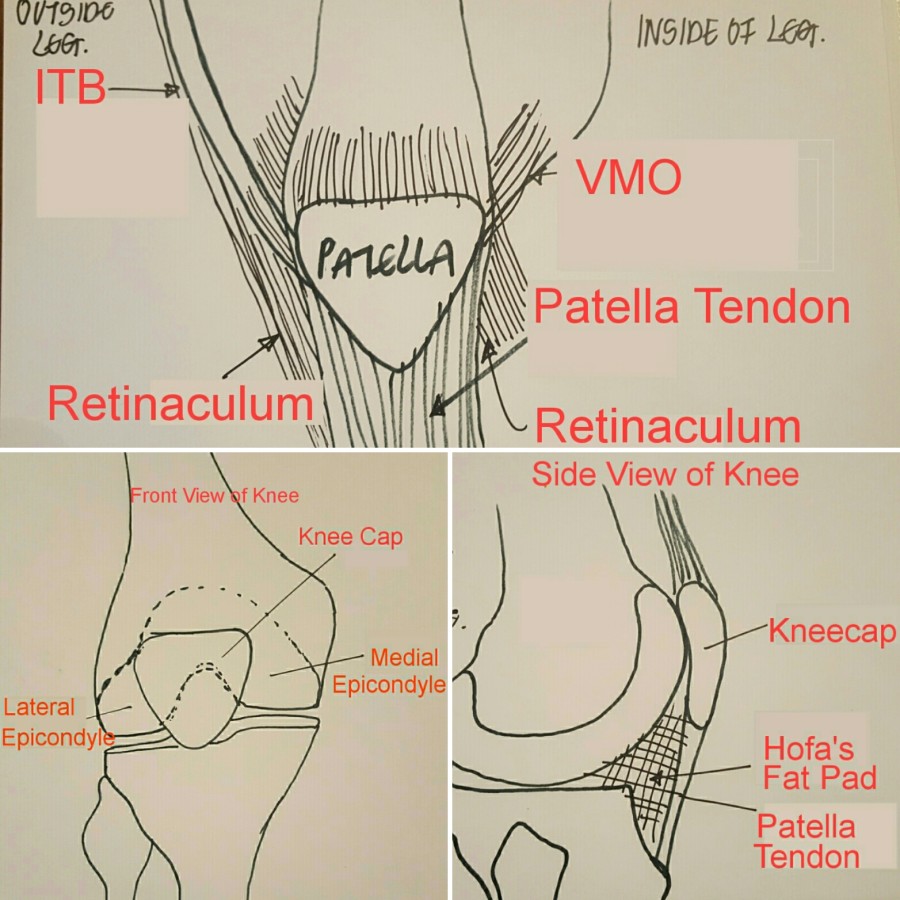PATELLAFEMORAL PAIN PART 1:
So that you have an idea of the function of the patella aka kneecap, I have drawn 3 images above that I hope will help.
As the knee bends from a totally straight position to a totally flexed position there are different structures that come into contact with the kneecap, which help in diagnosis of knee pain. So…
In full extension (straight leg) there is minimal compression on the back of the kneecap. However HOFA’S FAT PAD can be caught, so banana shaped pain in full extension under the knee cap may be due to the fat pad (also pinches in full flexion). See diagram.
As the knee begins to bend, the kneecap gradually gets more and more compressed from behind by the thigh bone.
At 20 – 30 degrees –> it begins to come into contact with the groove it sits in between the condyles shown in the bottom left picture and it keeps sliding down as the knee flexes more.
At 90 degrees flexion – most of the back of the knee cap has come into contact with the thigh bone behind.
Between 0 and 90 degrees the compression force on the kneecap increases. This combined with the large contact area helps to DECREASE the load on the kneecap.
But 90 degrees flexion – a SMALLER contact area on the back of the kneecap and INCREASED quadriceps compression on the kneecap INCREASES the load on the knee cap.
This is why squatting, >90 degrees may not be the best idea given that at least 6 times your bodyweight if not more
is going through the area.
The top image shows how the kneecap is influenced by muscles and other soft tissue.
The forces on the inside of the kneecap that help control its movement are:
1. VMO – The inner most quadricep muscle
2. Retinaculum
The forces on the outside of the kneecap:
1. ITB – Iliotibial band, popular area thats a common cause of pain in runners and an area people love foam rolling.
2. VML – the outside quadriceps muscle.
3. Retinaculum
Any weakness or wasting in these muscles can lead to poor movement of the patella and pain. Muscle tone and strength of the quadriceps is therefore important.
The Straight Leg raise is great way to strengthen without impacting the kneecap.



